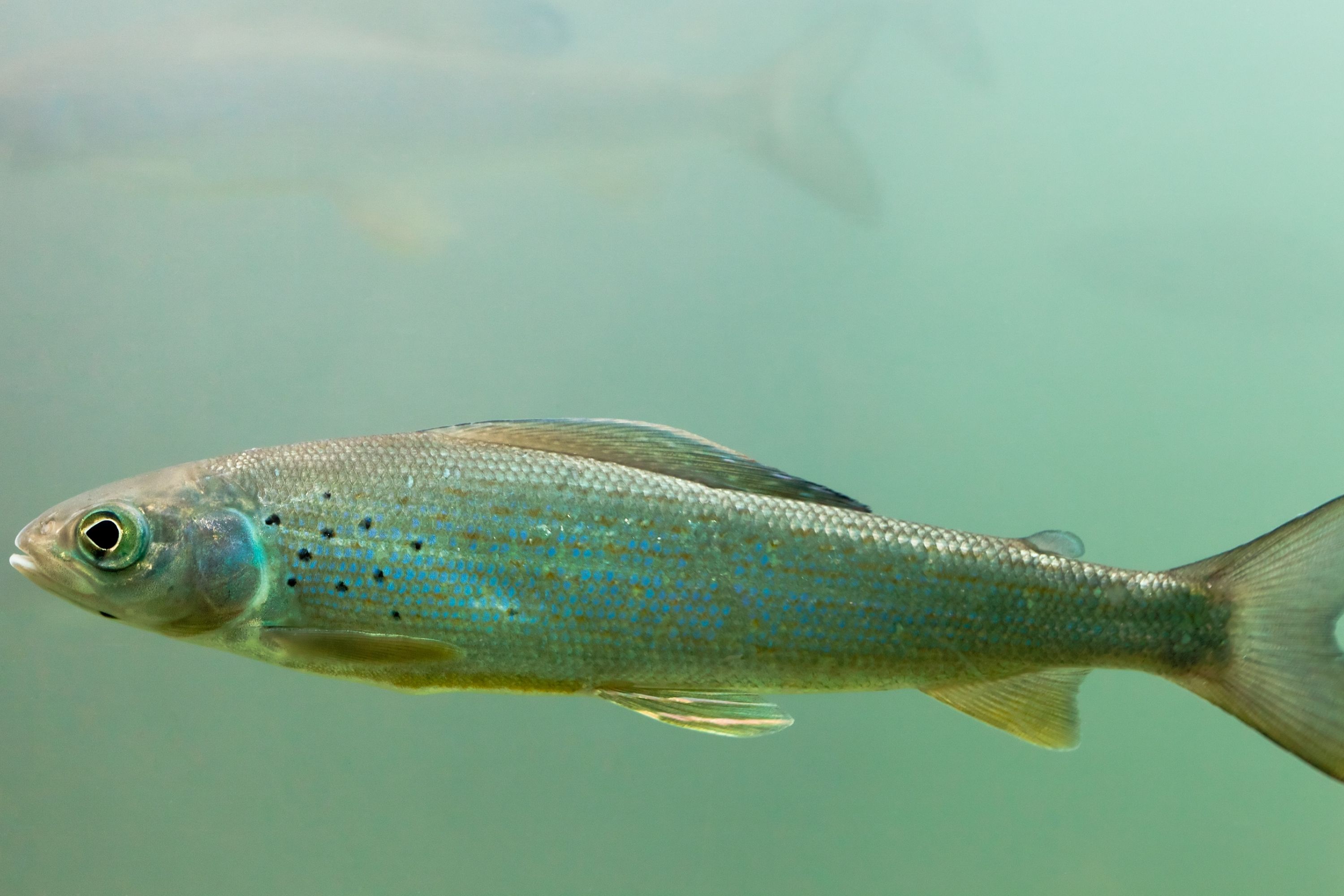Arctic grayling
(Thymallus arcticus)

Description
The Arctic grayling (Thymallus arcticus) is a species of freshwater fish in the salmon family Salmonidae. T. arcticus is widespread throughout the Arctic and Pacific drainages in Canada, Alaska, and Siberia, as well as the upper Missouri River drainage in Montana. In the U.S. state of Arizona, an introduced population is found in the Lee Valley and other lakes in the White Mountains. They were also stocked at Toppings Lake by the Teton Range and in lakes in the high Uinta Mountains in Utah, as well as alpine lakes of the Boulder Mountains (Idaho) in central Idaho. The scientific name of the Arctic grayling is Thymallus arcticus. It was named in 1776 by German zoologist Peter Simon Pallas from specimens collected in Russia. The name of the genus Thymallus first given to grayling (T. thymallus) described in the 1758 edition of Systema Naturae by Swedish zoologist Carl Linnaeus originates from the faint smell of the herb thyme, which emanates from the flesh. Arctic grayling grow to a maximum recorded length of 76 cm (30 in) and a maximum recorded weight of 3.8 kg (8.4 lb). Of typical thymalline appearance, the Arctic grayling is distinguished from the similar European grayling (T. thymallus) by the absence of dorsal and anal spines and by the presence of a larger number of soft rays in these fins. There is a dark midlateral band between the pectoral and pelvic fins, and the flanks may possess a pink iridescence. T. a. arcticus has been recorded as reaching an age of 18 years. Arctic grayling are widespread in Arctic Ocean drainages from Hudson Bay, Canada to Alaska and in Arctic and Pacific drainages to central Alberta and British Columbia in Canada. They do not occur naturally in the Fraser and Columbia river basins. There are remnant native populations of fluvial Arctic grayling in the upper Missouri River drainage in the Big Hole River and Red Rock basin ("Montana Arctic grayling"). Fluvial Arctic grayling have been reestablished in the upper Ruby River, a tributary of the Beaverhead River. The native range formerly extended south into the Great Lakes basin in Michigan. They occur naturally in the Arctic Ocean basin in Siberia from the Ob to Yenisei drainages and in European Russia in some tributaries of Pechora river.
Taxonomic tree:







